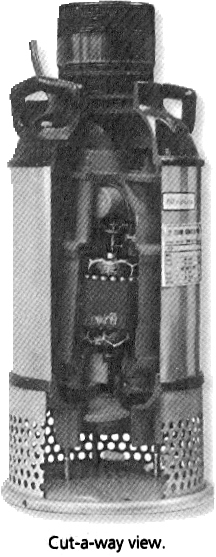Centrifugal Pump: Medium-
to moderate-pressure, flooded-suction or
self-priming pump. An impeller
is used to "sling" water to the outside, pumping by
centrifugal force.
Check Valves: Installed
on pump outlet to prevent back siphoning when off.
Flooded Suction: Water must
enter pump by gravity.
Foot Valve: Installed on
a pump inlet to prevent the loss of prime during
non-operational periods.
Freshwater Pumps: Freshwater
pumps can be used with salt water for brief
periods and experience only minimal
corrosion. Rinse with fresh water after use.
Head: The amount of pressure
that a pump must work against during operation.
Total head equals feet of vertical
lift plus friction. The amount of head is an
important value when sizing
a pump correctly. One psi equals 27 inches of water.
Friction: The loss in pressure
and volume that occurs when liquids travel through
pipes, fittings and other
restrictive elements of a piping system.
GPM: U.S. gallons per minute.
Pedestal Pump: A self-supporting
pump mounted above a long shaft with the
motor above water and the intake
below the water level.
Pressure Curves: Motor overload
can occur if pumps are operated below the
lowest pressures depicted by the
curves shown in the pumps specifications. If your
application does not have
sufficient head pressure to stay within the curve you
should throttle the outlet
with a valve or other restriction. Use an amp meter for
guidance.
Propeller Pump: A submersible
pump with a propeller which draws water
through a housing. Propeller pumps
are usually high volume low head.

Saltwater Compatible: Our
saltwater-compatible pumps are rated for long-term
continuous duty with salt water.
Little corrosion should occur within 1 year.
Spherical Pump: A silent
pump that has only one moving part an induction
driven impeller. Spherical pumps
have no motor shaft, seals or bearings, making
them virtually maintenance
free.
Trash Pump: A centrifugal
pump that can pass large objects, including sand,
gravel and mud. Often used for
dewatering ponds.
Vertical Pump: A centrifugal
pump mounted in a vertical direction. Vertical
pumps usually have a long shaft
with the motor mounted above water.
